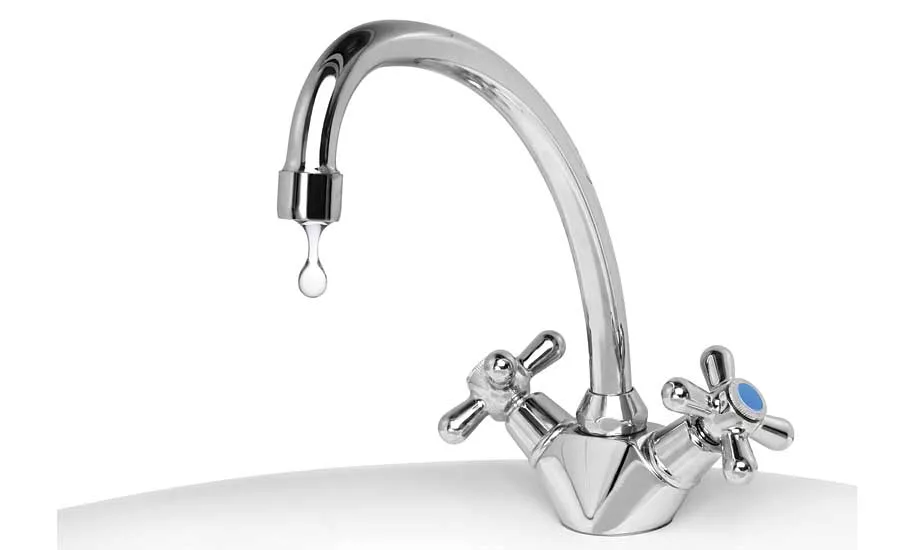Save water with low-flow plumbing fixtures
44 gallons per day.

A common question that I am often asked is, “How much water does a person use a day?”
My response is always, “Good question! Who knows?”
It is generally assumed that with all of the plumbing books sitting on my bookshelf, there must be a value of daily use somewhere in those books. In fact, many books have a daily use. Almost every one of those books has old, out-of-date numbers. One of my favorite books lists a value of 20 to 90 gallons per person per day for a dwelling unit.
Your first response should be, “That is a wide variation in water use.” It is, but the book explains further. The low value is based on people who work in a metropolitan area where they commute to work. The thought process is that they pick up breakfast on the way to work, use the facilities at work, and only eat the dinner meal at home. Hence, more water is used at work as opposed to the dwelling unit.
Some of the other books indicate a range of 75 to 100 gallons per person per day. Going back to my school days, we were taught to use 75 gallons per person per day when doing calculations. It was considered a safe number. Realize that all of these values were based on older, water-consuming plumbing fixtures. They assumed a 5 gpf water closet, 5-8 gpm shower head, and 4 gpm kitchen sink.
All my green friends think that 75 gallons is too much water per person per day. I would agree with them. However, none of my friends can give me a good number to shoot for in reducing the amount of water. I hear various numbers but nothing absolutely concrete. Basically, it is just cut back and use less water.
Since my wife and I became empty nesters, I started to monitor our water use to see what we have really been using on a daily basis. The only time it gets screwy is during the summer months. At the beginning of the season, I need to add water to the swimming pool. During the dry part of the summer, I water my vegetable garden and flowers every other day. Hence, there is no regularity to the water use.
For the rest of the year, we have been coming in at 44 gallons per person per day. That means for the two of us, we are using 88 gallons of water a day. I have trusted my town’s water department to come up with this value. I am using the water meter readings that they provide every month.
If you go by the 75 gallons of water per person per day number, 44 gallons is a reduction of more than 40 percent. That sounds extreme, but we really don’t go out of our way to save water. Our philosophy has been to use the latest plumbing technology and do our best to conserve.
So how did we get down to 44 gallons of water per person per day? First, let me put a few things into perspective.
We commute vertically — my office is one level below my bedroom — so we are using water all day long. We eat and prepare every meal at home. However, I travel a lot. When I’m out of town, I use other people’s water. So, from that perspective, I cheat. You could say that my traveling allows my wife to use some of my 44 gallons of water per day. But she doesn’t — she is good at conserving water.
There are three water closets in the house that use 1.6, 1.28, and 1.0 gpf. There is no preference; we use all three equally. However, the 1.0 gpf is in the bathroom used by most guests.
Our lavatory faucets in the master bedroom and office bathroom have a flow rate of 1.5 gpm. That is more than enough water for a lavatory, requiring nothing more than an easy swap-out of aerators. In the other bathroom, the aerator is 0.5 gpm. But that aerator has dancing water, so nobody seems to care about the low flow rate.
There are three showerheads, of which we only use two — a his and a hers. Two of our showerheads have a flow rate of 2.0 gpm; the other is a 2.5 gpm. The 2.5 gpm showerhead is a high-end showerhead that doesn’t come in a lower flow rate.
The length of my showers tend to be five minutes or less. Yes, I do time them out of curiosity. My wife’s showers are just a little longer. Typical estimates are a 10-minute shower each day, so you could say we just like being faster and more efficient taking a shower.
The kitchen sink flow rate is 2.2 gpm; however, it is a touch faucet — touch on and touch off. We have found that we use a lot less water because is so easy to turn it on or off. Even though it is 2.2 gpm, the full flow isn’t always on.
The other use of water is the automatic clothes washer and the dishwasher. About five years ago, we switched to a drawer dishwasher. There are really two dishwashers stacked on top of one another. At first, we hated the switch. While using much less water, the dishes didn’t seem to get clean. It was after speaking to my sister-in-law, married to my brother the plumber, that our dishes started getting clean. It all had to do with the soap pod and how you used it. Now, we love having two stacked dishwashers. We do use less water and typically only run one dishwasher on most days.
As for the washing machine, again we switched to a high-efficiency washing machine. The newer washing machines use a fraction of the water compared to our former 20-plus-year-old machine. The new washing machine requires high-efficiency detergent, which costs a little more, but so what? It uses a minimal amount of water and cleans the clothes just fine.
So now when I am asked how much water we use a day, I respond that, for my wife and I, it is 44 gallons per person per day. A few simple, easy changes result in a large savings in the amount of water we use. Plus, we have not sacrificed the luxury of using our plumbing fixtures. This should be something that you can easily sell to your customers.
This article was originally titled “44 gallons per day” in the February 2017 print edition of Plumbing & Mechanical.
Looking for a reprint of this article?
From high-res PDFs to custom plaques, order your copy today!





